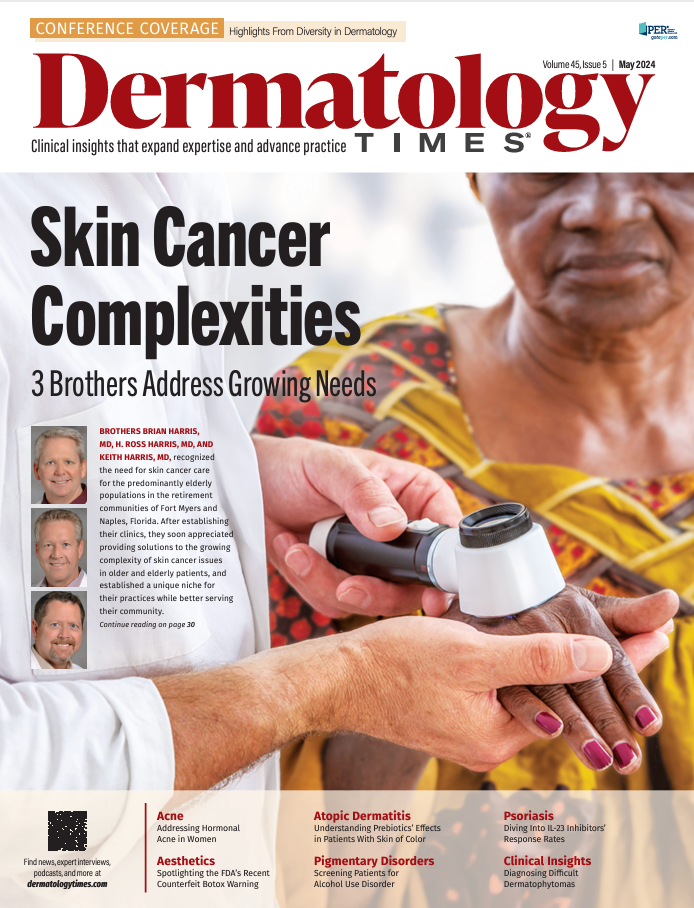- Case-Based Roundtable
- General Dermatology
- Eczema
- Chronic Hand Eczema
- Alopecia
- Aesthetics
- Vitiligo
- COVID-19
- Actinic Keratosis
- Precision Medicine and Biologics
- Rare Disease
- Wound Care
- Rosacea
- Psoriasis
- Psoriatic Arthritis
- Atopic Dermatitis
- Melasma
- NP and PA
- Skin Cancer
- Hidradenitis Suppurativa
- Drug Watch
- Pigmentary Disorders
- Acne
- Pediatric Dermatology
- Practice Management
- Prurigo Nodularis
- Buy-and-Bill
News
Article
Dermatology Times
Journal Digest: April 4
Author(s):
This week’s collection of the latest dermatologic studies covers topical permethrin 5% vs. benzyl benzoate 25% for scabies, the safety of omalizumab in CSU during pregnancy, symptoms of cognitive impairment in children with AD, and the ethics of cosmetic overtreatment.
Credit: Dermatology Times

British Journal of Dermatology: Comparison of Topical Permethrin 5% vs. Benzyl Benzoate 25% Treatment in Scabies: A Double-blinded Randomized Controlled Trial
Meyersburg et al’s study conducted at the University Hospital of the Paracelsus Medical University in Salzburg, Austria, compared the efficacy of 2 commonly used treatments for scabies: permethrin 5% cream and benzyl benzoate (BB) 25% emulsion. The research included 110 patients diagnosed with scabies based on clinical symptoms and dermoscopic examination. Patients were randomly assigned to receive either permethrin or BB for 3 consecutive days. The study findings revealed that BB demonstrated significantly higher efficacy in removing scabies infestations compared to permethrin. The cure rate was 87% in the BB group compared to 27% in the permethrin group. Additionally, the study highlighted the reasonable tolerability of BB, with mild treatment-emergent adverse events reported in 43% of patients, while permethrin consistently demonstrated favorable tolerability and only 6% of patients reported mild itching. The results suggest BB should be considered as a first-line therapy for scabies, especially due to potential permethrin resistance. Meyersburg et al also emphasized the importance of updating treatment guidelines based on current evidence to ensure effective management of scabies.1
Clinical and Experimental Dermatology: Safety of Omalizumab in Chronic Urticaria During Pregnancy: A Real-life Study
Patruno et al’s multicenter retrospective study conducted in Italy assessed the efficacy and safety of omalizumab in pregnant patients with severe chronic spontaneous urticaria (CSU) refractory to standard treatments. Data from 29 pregnant patients treated with omalizumab were collected, with 23 conceiving while on treatment (group A) and 6 starting treatment during pregnancy (group B). The study results showed the successful reduction of urticaria activity scores with omalizumab in both groups, with no significant adverse effects observed in mothers or newborns. In group A, 23 live births occurred, with no congenital anomalies reported. In group B, all infants were born full-term with no complications. Patruno et al’s findings suggest that omalizumab may be an effective and safe treatment option for pregnant patients with severe CSU refractory to standard therapies. Further prospective studies are needed to confirm these findings and establish treatment guidelines, according to Patruno et al.2
JAMA Dermatology: Symptoms of Cognitive Impairment Among Children With Atopic Dermatitis
Ma et al’s cross-sectional study, utilizing 2021 US National Health Interview Survey data, investigated the association between atopic dermatitis (AD) and symptoms of cognitive impairment in children. Among over 69 million participants, those with AD were more likely to experience learning and memory difficulties compared to those without AD. However, this association was primarily observed in children with neurodevelopmental comorbidities like attention-deficit/hyperactivity disorder or learning disabilities, and not among children without such conditions. Adjusted logistic regression models showed that AD was independently associated with increased odds of learning and memory difficulties. Notably, the presence of neurodevelopmental disorders significantly increased these odds. Ma et al’s findings highlight the importance of evaluating cognitive impairment in children with AD, particularly among those with comorbid neurodevelopmental disorders. The study findings enhance risk assessment for cognitive impairments in children with AD and emphasize the need for prioritized cognitive evaluations in this population, according to the study authors.3
JAAD International: The Ethics of Cosmetic Overtreatment
Gupta et al’s commentary explored the ethical dilemmas surrounding cosmetic procedures, particularly the rise in demand for non-invasive treatments in the United States. It highlights the various factors driving individuals to seek cosmetic treatments, including societal pressures, body dysmorphic disorder, and the influence of social media on beauty standards. Gupta et al emphasized the importance of dermatologists upholding ethical principles such as nonmaleficence and providing safe, evidence-based care to patients. The authors stress the significance of dermatologists being able to say "no" to unnecessary or potentially harmful procedures, even if it may strain the physician-patient relationship. By prioritizing patient safety and well-being over profit or patient demands, dermatologists can maintain their reputation as trusted healthcare providers committed to ethical practice in the field of cosmetic dermatology.4
References
- Meyersburg D, Hoellwerth M, Brandlmaier M, et al. Comparison of topical permethrin 5% vs. benzyl benzoate 25% treatment in scabies: a double-blinded randomized controlled trial. Br J Dermatol. 2024;190(4):486-491. doi:10.1093/bjd/ljad501
- Patruno C, Guarneri F, Nettis E, et al. Safety of omalizumab in chronic urticaria during pregnancy: a real-life study. Clin Exp Dermatol. 2024;49(4):344-347. doi:10.1093/ced/llad386
- Ma EZ, Chang HR, Radtke S, Wan J. Symptoms of cognitive impairment among children with atopic dermatitis. JAMA Dermatol. Published online March 6, 2024. doi:10.1001/jamadermatol.2024.0015
- Gupta R, Tao J, Hashemi DA, Geronemus RG, The ethics of cosmetic overtreatment. JAAD International (2024), doi: https://doi.org/10.1016/j.jdin.2024.03.016.







